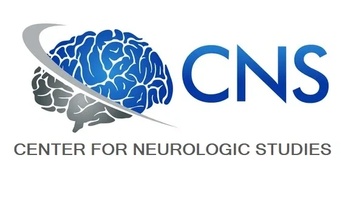Advanced MRI
Advanced magnetic resonance imaging (MRI) has been put forth as “an equalizer“ for its ability to detect the presence of different injury sub-types and to group subjects on the basis of pathology. The CNS team will continue to develop and refine our already advanced methods of detecting TBI pathology, while leveraging these capabilities to improve outcomes.
Our methods include two core imaging strategies: Susceptibility-Weighted Imaging (SWI) and Diffusion Tensor Imaging (DTI). See the clear advantage of these methods compared to the traditional “Flair” MRI in the red circled areas on the image to the right:

Susceptibility-Weighted Imaging (SWI)
The image at the right shows a comparison of a traditional MRI technique, FLAIR (a), to an SWI image (b). Both images were taken of the same patient. Note the visible ‘gaps’ in (b) that would have gone undiagnosed were a clinician to use only (a). The SWI image is possible through the use of algorithms that differentiate the densities of adjacent tissues. While signal density forms the basis of all MRI scans, including (a), the SWI scan (b) is 3-to-6 times more sensitive as it accounts for the susceptibility of all brain elements, including hemorrhages – hence, the name susceptibility-weighted image. SWI is clinically appropriate in the diagnosis of: TBI, Tumors, Stroke and Hemorrhage, MS, Vascular Dementia, Sturge-Weber disease, and other brain disorders.

Diffusion Tensor Imaging (DTI)
DTI is appropriate for imaging the brain’s neural tracts for signs of injury or disorder. DTI works by measuring the diffusion of water through tissue. Measurements are isolated to identify the preferred direction of flow, which allows for the isolation of neural tracts from the brain’s white matter.
DTI is the most sensitive MRI approach currently available and can be used to identify tract-specific lesions caused by TBI.
In one study DTI scans found tumors, hemorrhages, and obstructions in 63 of 179 patients that were undiscovered using traditional MRI scans.

Video
Spinning Brain
MRI and CT images are two-dimensional. For a truly impactful imaging presentation, a brain viewed in three dimensions can provide a more comprehensive picture of injury location and the extent of brain injury. CNS now has the potential of providing “rotating 3-D images” highlighting areas of the brain that differ from a cohort of subject without brain injury. To learn how to obtain a 3-D image of a given subject’s brain, reach CNS at 727-565-4929.
This website uses cookies.
We use cookies to analyze website traffic and optimize your website experience. By accepting our use of cookies, your data will be aggregated with all other user data.

